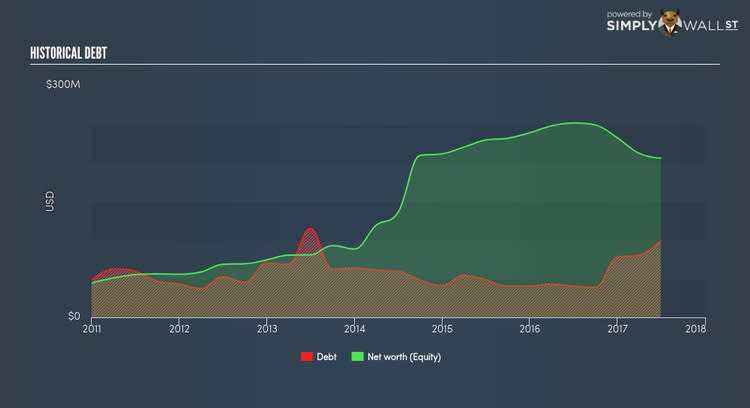Kandi Technologies Group Inc (KNDI): Time For A Financial Health Check

Kandi Technologies Group Inc (NASDAQ:KNDI) is a small-cap stock with a market capitalization of USD $363.86M. While investors primarily focus on the growth potential and competitive landscape of the small-cap companies, they end up ignoring a key aspect, which could be the biggest threat to its existence: its financial health. There are always disruptions which destabilize an existing industry, in which most small-cap companies are the first casualties. These factors make a basic understanding of a company’s financial position of utmost importance for a potential investor. Here are a few basic checks that are good enough to have a broad overview of the company’s financial strength. View our latest analysis for Kandi Technologies Group
Does KNDI generate an acceptable amount of cash through operations?
Unxpected adverse events, such as natural disasters and wars, can be a true test of a company’s capacity to meet its obligations. These adverse events bring devastation and yet does not absolve the company from its debt. Fortunately, we can test the company’s capacity to pay back its debtholders without summoning any catastrophes by looking at how much cash it generates from its current operations. Last year, KNDI’s operating cash flow was -0.48x its current debt. This means what KNDI can generate on an annual basis, which is currently a negative value, does not cover what it actually owes its debtors in the near term. This raises a red flag, looking at KNDI’s operations at this point in time.
Can KNDI meet its short-term obligations with the cash in hand?
What about its other commitments such as payments to suppliers and salaries to its employees? In times of adverse events, KNDI may need to liquidate its short-term assets to pay these immediate obligations. We should examine if the company’s cash and short-term investment levels match its current liabilities. Our analysis shows that KNDI does have enough liquid assets on hand to meet its upcoming liabilities, which lowers our concerns should adverse events arise.
Is KNDI’s level of debt at an acceptable level?
A substantially higher debt poses a significant threat to a company’s profitability during a downturn. For KNDI, the debt-to-equity ratio is 47.96%, which means, while the company’s debt could pose a problem for its earnings stability, it is not at an alarmingly high level yet. We can test if KNDI’s debt levels are sustainable by measuring interest payments against earnings of a company. Ideally, earnings should cover interest by at least three times, therefore reducing concerns when profit is highly volatile. In KNDI’s case, its interest is excessively covered by its earnings as the ratio sits at 153.91x. Lenders may be less hesitant to lend out more funding as KNDI’s high interest coverage is seen as responsible and safe practice.
Next Steps:
Are you a shareholder? KNDI’s cash flow coverage indicates it could improve its operating efficiency in order to meet demand for debt repayments should unforeseen events arise. However, the company exhibits an ability to meet its near term obligations should an adverse event occur. Given that KNDI’s financial situation may change. I suggest researching market expectations for KNDI’s future growth on our free analysis platform.
Are you a potential investor? Though near-term liquidity isn’t an issue, KNDI’s high debt levels along with low cash coverage of debt may not be what you’re after in an investment. But, keep in mind that this is a point-in-time analysis, and today’s performance may not be representative of KNDI’s track record. You should continue your analysis by taking a look at KNDI’s past performance analysis on our free platform to conclude on KNDI’s financial health.
To help readers see pass the short term volatility of the financial market, we aim to bring you a long-term focused research analysis purely driven by fundamental data. Note that our analysis does not factor in the latest price sensitive company announcements.
The author is an independent contributor and at the time of publication had no position in the stocks mentioned.

